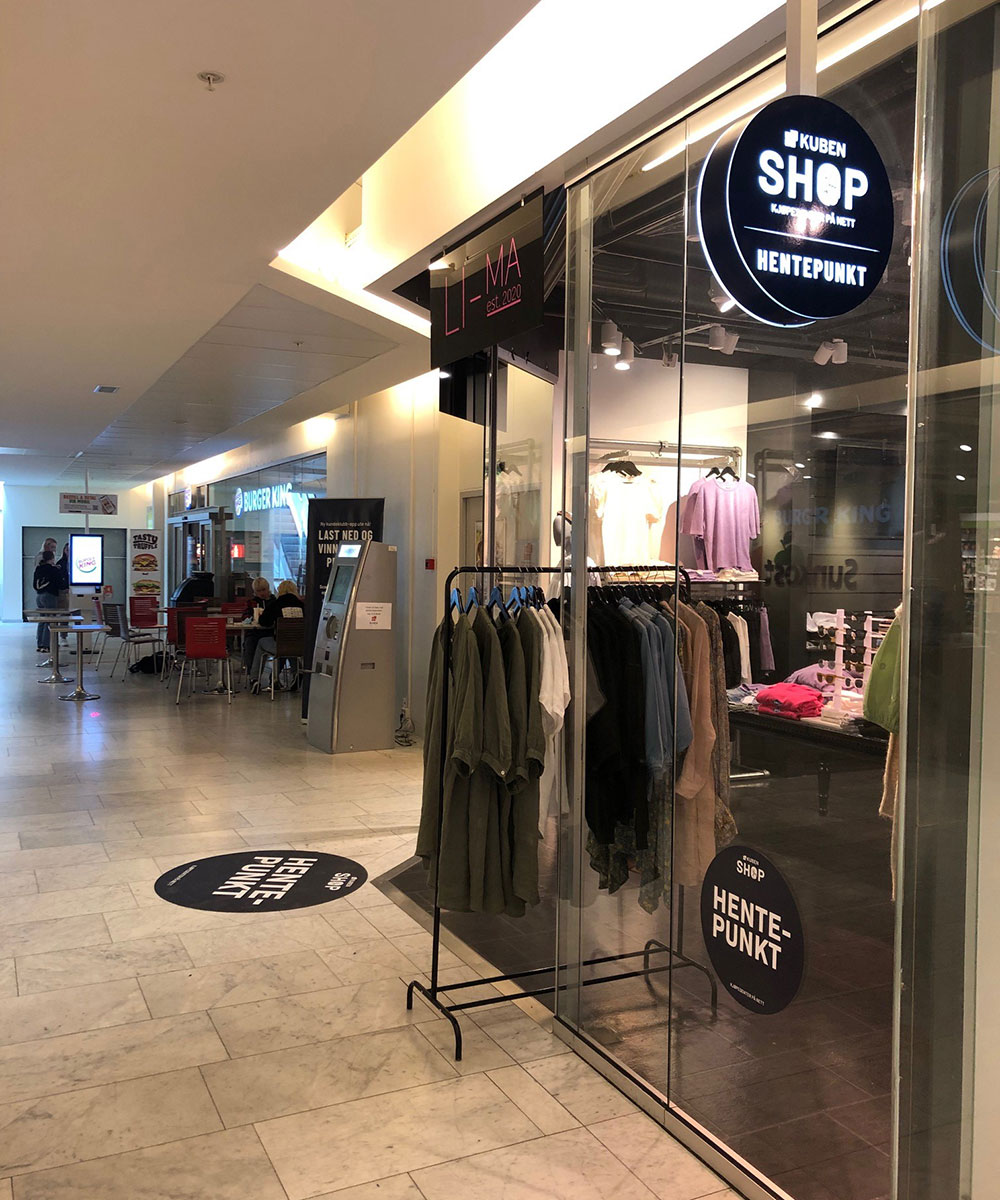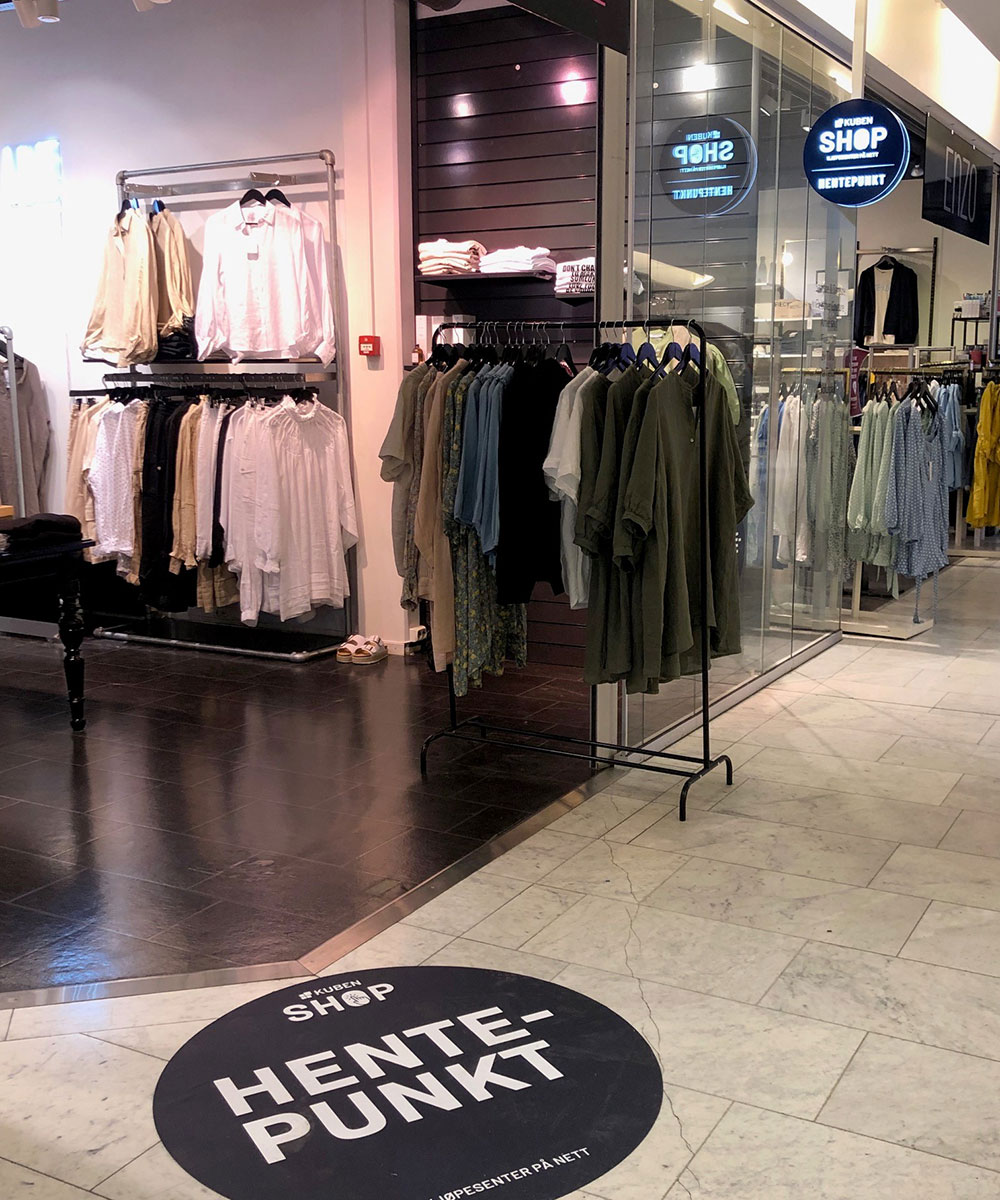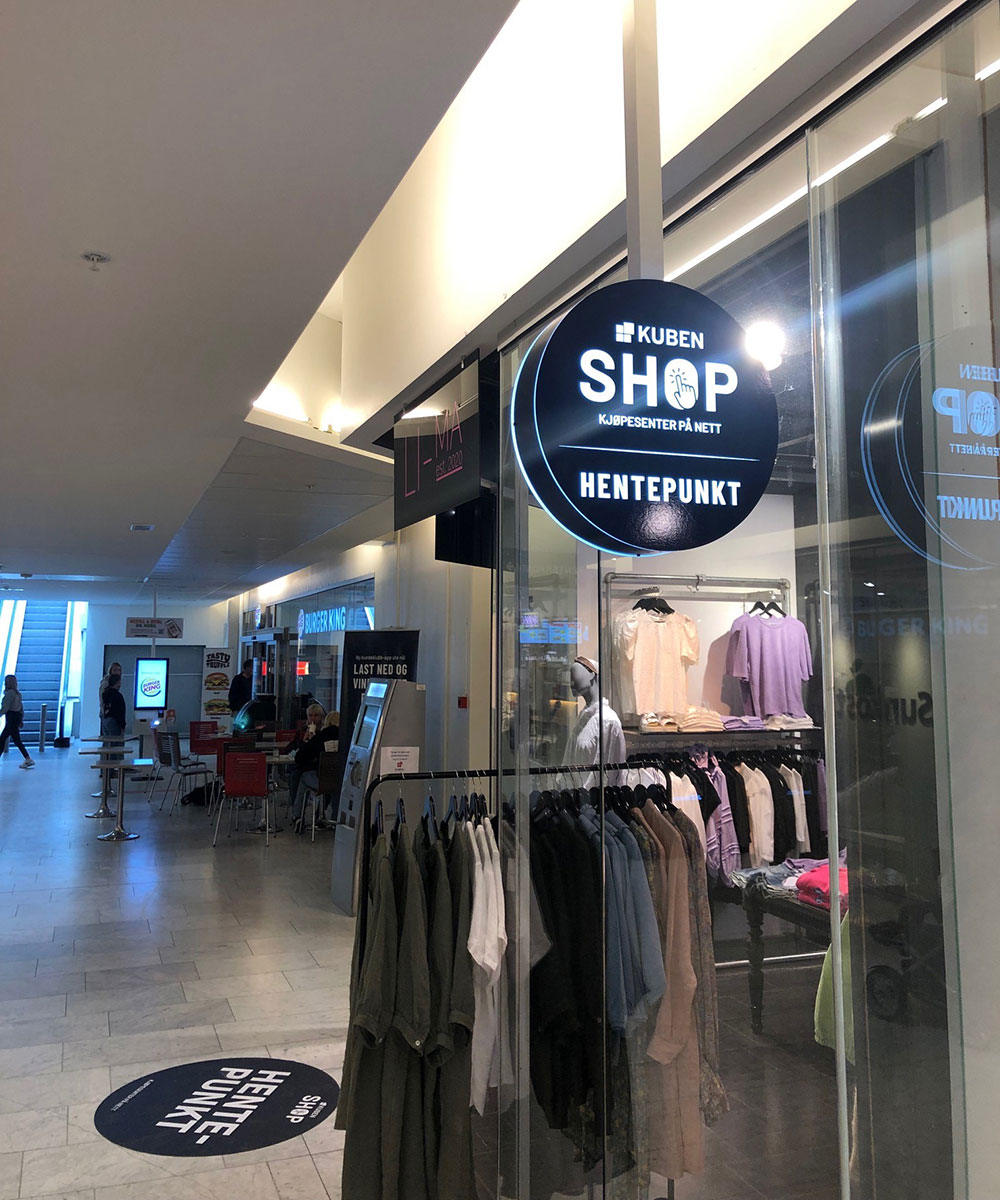A digital marketplace is an indispensable integration element for shopping centers, as Peter Tonstad, CEO of Placewise Group and Member of the Across Advisory Board, explains. His insight solidifies the inescapable fact that digitalization and innovation are necessary to keep pace.
ACROSS: WHAT IS YOUR OPINION REGARDING THE DIGITALIZATION OF THE SHOPPING CENTER INDUSTRY IN GENERAL?
PETER TONSTAD: Digital is becoming more and more strategic in the industry, and that is also a result of the experiences that have occurred during the pandemic. Over the last few years, there has been a lot of focus on digital. If you went to any kind of industry conference, the typical program was dominated by digital topics. There have been a lot of omni-channel and big data discussions. However, there is certainly a gap between ambition and plans versus actual execution in the market–most things have happened on the tenant side, not at the shopping center level. During the pandemic, all digital trends have been accelerated. It is more evident than ever that shopping centers will become a combination of the physical marketplaces that they are today and digital marketplaces. The global estimate for the e-commerce share of retail spending is 18 %, so the majority is still held by physical retail. Everyone expects the share of e-commerce to grow, but they expect there to be a combination of physical and digital, which is the solution most are now betting on – not one or the other. Look at players like Amazon: They are now opening department stores – a format that has recently been written off by most of the industry. Furthermore, when looking at the distribution of e-commerce sales, it is marketplaces that now represent the biggest share, and that is good news for shopping centers.
ACROSS: HOW WILL E-COMMERCE BECOME A NATURAL PART OF SHOPPING CENTERS?
TONSTAD: We believe all shopping centers that have more than 20 tenants will become a combination of a physical and digital marketplace. It is imperative for shopping centers to become part of the e-commerce economy; otherwise, your business will decline in the upcoming years. I do not think any owner of retail real estate will sit by and accept the fact that e-commerce is grabbing a bigger and bigger share of retail and not try to be a part of it. All e-commerce spending today is typically between retailer and consumer – the shopping center is excluded from the equation. It is crucial that shopping centers quickly evolve towards bridging the gap between zero revenue from e-commerce to the current global level of 18% of consumer retail spending. Moreover, since shopping centers can generate a revenue share from e-commerce over time that is equal to the overall split between physical and digital retail, the shopping center is, by definition, future-proof. In terms of future consumer preferences, they will be able to achieve a balance between physical and digital shopping. I believe this prospect should be on the agendas of all boardroom meetings across the industry. If I owned a shopping center, I would not sleep well at night until I knew my center had the potential to become part of the e-commerce economy.
ACROSS: HOW SHOULD ONE START?
TONSTAD: Firstly, it is important to recognize the competitive advantages shopping centers have in the e-commerce space. Last mile delivery is a pain point for anyone involved in e-commerce, and an even bigger challenge lies is the growing level of returns. Within fashion, e-commerce marketplaces are reporting more than 50% of returns from all sales, and 10% of the returns end up as breakage or waste. That is not sustainable from an environmental or financial perspective. Leveraging the local inventory that is at the shopping center is a great contributor to solving these challenges. Consumers have more and more reasons to go to a shopping center for services, entertainment, and dining, so why not combine that with fulfillment of e-commerce shopping? However, to take a step back, it all starts with creating a direct digital relationship between the shoppers and the shopping center, and that is what we have been doing for our clients for many years via our Customer Data Platform and digital programs. The question on day one is: What is your digital reach? Very often, if we start working with a new client, that number is more or less zero. If you measure unique visitors over the course of a year, how many of those visitors are in your database? The number of digital profiles should then be seen in relation to your unique visitation over 12 months. Across our global client base, consumers visit their shopping centers 1.15 times per week on average. That number can be used to calculate your unique visitation. The best way to kick off a digital program is to offer shoppers high-quality benefits and rewards with the highest possible monetary value. Typically, those will be in the form of exclusive discounts and offers from the tenants. The digital reach that is accumulated over time will be the primary channel for marketing the e-commerce offering. On average, our clients have 30% of their annual physical visitation in their database.
ACROSS: WILL THAT LEAD TO THE NEGLECT OF PHYSICAL RETAIL?
TONSTAD: No, not at all. It is the combination of physical and digital that is interesting. Again, look at what the pure play e-commerce vendors are doing right now. They are looking towards physical retail, and that is still where 80% of the money sits. I recently read that the costs for online conversions increased by 40% last quarter. That makes physical conversions more competitive, and that trend is expected to continue. It is also interesting to look at how digital adds a new dimension to the tenant versus shopping center relationship. We want to enable our clients to serve their tenants in digital channels as they do in the physical space, which means they can deliver shoppers and transactions directly from digital channels to the benefit of the tenants. It has become a parallel business model for the shopping center. Again, the combination of physical and digital is what is so interesting.
ACROSS: HOW MUCH ARE THE INVESTMENT COSTS?
TONSTAD: It always depends on the scope, and the scope typically differs from one shopping center to the other. Our definition of a shopping center as a digital marketplace includes integration with retailers for product and inventory data, a consolidated storefront for all retailers, and the ability for customers to make cross-retailer payment and bundled delivery or pickup. A basic marketplace solution starts at €30,000 for the first year, and further investment depends on how many tenants are part of the scope.
ACROSS: HOW IS KUBEN CENTER PIONEERING THIS STRATEGY?
TONSTAD: Kuben Center in Honefoss Norway is our launch client for what has been defined as the world’s first fully-integrated digital marketplace for a shopping center. It is owned by Scala Property, which is a very forward-looking and innovative owner. Together with Kuben, we can test concepts live with both shoppers and tenants. Their starting point was very attractive, because, in their digital consumer database, they have a reach that equals roughly 50% of their defined catchment area. That is the perfect launch channel for a digital marketplace. Placewise and our partners have been working on the technology side of this product for quite some time. Together with Scala, we have approached retailers to get them on board. The vast majority of the retailers, roughly 90%, have been very positive with respect to the initiative–some of them even expect the same from their respective shopping centers. After securing their buy in, it is now all about technical integration in order to get access to product and inventory data. That part is complex and should not be underestimated, and there are typically as many data formats to relate to as there are retailers in the marketplace. All involved parties have a long-term view with regard to the project, and it is understood that it will take time to for consumers to adapt.
ACROSS: WHAT ARE THE NEXT STEPS?
TONSTAD: In the commercial phase, it is about optimizing the setup in terms of sign up and check out, product presentation, anything that creates consumer engagement, and optimizing the entire marketing flow to increase conversions over time. In terms of the industry, there are roughly 90 discussions going on across the market about similar kinds of projects. Right now, we have a starting point in the US as well, a shopping center called Corners of Brookfield. Our scope primarily involves the integration of product feeds, because, up to this point, there have been many e-commerce versus shopping center initiatives. We have participated in many of them. In the end, they often serve as more of an affiliate relationship builder. This is the first time that it is a true, consolidated, cross-retailer marketplace, and that is the attractive element for customers.
ACROSS: WHY SHOULD SHOPPING CENTERS ENGAGE IN THE HIGHLY COMPETITIVE E-COMMERCE SECTOR?
TONSTAD: In short, they have the competitive advantage of being the fulfillment hub of the respective catchment area, and they offer solutions to the big e-commerce challenges related to last mile deliveries and returns. Overall, I do not see not engaging in e-commerce as an option as that would result in a decline in shopping center sales, thereby enabling the e-commerce share of retail spending to grow.
ACROSS: HOW PREPARED ARE RETAILERS FOR THIS EVOLUTION?
TONSTAD: Making your product feeds available via APIs for multiple e-commerce channels or marketplaces has become a big thing. Despite the increase in competition, I would say this evolution is great for shopping centers, because there are more channels selling retailers’ products. In reality, the majority of retailers do not have an open feed available. In these projects, we have to work tenant by tenant, which obviously creates a big bottleneck. A digital product feed combined with an accurate inventory feed is often not available. You can divide all retailers into different categories: ready to go immediately, need to do some mending of the product feed, need to do some manual work, and so on. Then, you typically start where access is easiest, and you work your way through the funnel over time.
ACROSS: WHAT ARE THE CONCRETE GAINS IN TERMS OF THE IMPLEMENTATION OF A DIGITAL MARKETPLACE?
TONSTAD: If you open a digital marketplace, there is no guarantee that everybody will immediately flock to that offering–consumers already have a wide range of choices. You need to start marketing and positioning the digital marketplace. It takes time to build consumer knowledge and create new habits, which means it also takes time to get conversions or transaction volumes that really have an impact on sales. Our target remains the same: We would like to see our individual clients reach a level of 10% of total sales over a period of three years, from the day it is commercially launched. The value to the shopping center and the tenants goes beyond pure online conversions. It provides a great presentation of the content of the shopping center to shoppers who plan to shop at physical stores directly. The “searchable mall” is not a new concept, but this is the first time the prospect of being able to replicate the contents of a mall in a digital marketplace is actually coming together.
ACROSS: WHAT ARE SOME EXAMPLES OF VISIBLE MARKETING AT A GIVEN LOCATION?
TONSTAD: Typically speaking, marketing assets, such as stickers on walls, floors, and windows. Then, ideally, advertising is available in the individual retailer stores and there is a very attractive location for the central pickup point, which should be well branded. This requires employees to then pick up inventory or products from retailers and bring them to the central fulfillment or pick-up point. Branding of the digital marketplace in the physical shopping center is crucial. When walking around, it should be impossible to go without noticing that there is a digital marketplace offering as well. However, the actual driving of conversions happens in the digital space, so you need to market towards the database and all available digital channels, including the center website and social media.
ACROSS: WHAT EFFECT DOES THAT HAVE ON PURCHASING HABITS AND OPERATIONS?
TONSTAD: It is one thing to generate traffic to the e-store or marketplace and another to get actual checkouts. There is a lot of interest in checking out the offering–online marketing is currently driving 60% of conversions to visit the marketplace. In our initial analysis, 40% of transactions included more than one retailer represented in the shopping cart. That is a very important KPI to keep an eye on, as cross-retailer purchases are a key value add for a marketplace.
We have all seen what happens in retail when we fail to keep pace with changing consumer behavior and preference, and technology has increased the velocity of that change. What may appear to be an interesting future vision can quickly become an expectation, and, in hindsight, an obvious evolution. The issue of e-commerce versus shopping centers is not the type of evolution in which the majority can lean back and wait to see how the innovators perform. Success is only guaranteed if the whole industry engages. As the saying goes: “The best time to plant a tree was 40 years ago. The second-best time is today.”








